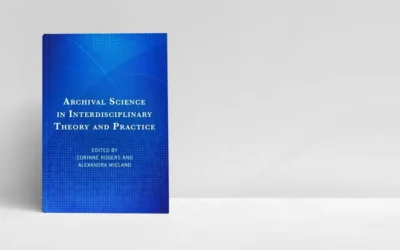Recordkeeping Governance Policies
Margot Note
Policies for recordkeeping need to articulate several areas, including purpose, definitions, roles and responsibilities, and the functional areas of managing records that the organization needs to implement.
Each organization’s policy is different, sometimes because the policy must conform to the organization and its mission and values.
The Policy Framework
Several policy issues need to be considered when establishing a policy framework. The first is accountability. The policy needs to clearly state the roles and responsibilities of employees to create and maintain records and the authorized duties and activities of the archives and records management programs. Accountability for these programs should always start from the top and be delegated. The policy should include program managers, system owners, IT staff, and all employees.
The second is the “tiering” of policy requirements. In large organizations, the policy will be a high enough level to accommodate all parts of the organization. There will be a policy flow down from the organization to significant components to minor components in such cases. This is necessary to ensure that the guidance offered to employees is sufficiently specific to enable implementation. The result may be called organization-specific policies, or they may be called implementing procedures. That is an organizational culture and governance issue, but in any case, the flow down is essential for ensuring that the policy is implementable. There must be a continuum between the organization-wide requirement to create and maintain documentation of activities and the requirement that a personnel file contains specific documentation.
The third is policy placement. Archives and records management programs need policies that are part of the comprehensive compendium of policies in the organization. However, few people will ever bother to read these documents, no matter how well it is communicated. These policies and recordkeeping requirements should be integrated into the IT system development process in the employee manuals.
Program Placement
Lastly, consider the programs’ placements. Where do archives and records management programs belong in an organization? There is no perfect placement, and much depends on the organization itself. Places include:
- Organization Executive: Archivists or records managers reporting directly to the organization’s executive level would be optimal. However, this rarely happens because few programs of any kind report there directly.
- IT Office or Office of the CIO: This seems logical given the emphasis on electronic records and can work well if the CIO wants to have documents as part of their organization. It means that the programs are organizationally close to systems activities, which influences IT policy, process, and infrastructure. The IT department generally has money as well, which is useful. However, if the head of IT is not interested in records and sees them as a burden, then the programs will have little influence within IT and even less outside of it because external relationships must go through the head of IT.
- General Counsel: The Office of the General Counsel (OGC) often relies on archivists and records managers for evidence of organizational activities, but the OGC wants to use records and not be responsible for the program. Often, legal departments make better stakeholders and advocates for archives and records management than homes for their programs.
- Support Services: Some organizations have an office of support services that provides IT and administrative services and security, facilities, and other tasks. Administration can be a home for the program and a useful one if archivists and records managers report directly to the head of the support services group rather than through someone else.
- Library: In this case, the archives and records management programs are seen as another information resource. The downside is that the archives and records management programs are viewed as retrieval repositories, not creation management engines. It can provide a start but usually is not the basis for a complete program.
Making It Work
Any location can be made to work. However, what archivists and records managers need, regardless of where they reside within an organization, is executive support, the ability to influence decisions that involve records, resources (budget and staff), and the opportunity to make strong alliances with stakeholders and others throughout the organization.
Margot Note
Margot Note, archivist, consultant, and Lucidea Press author is a regular blogger, and popular webinar presenter for Lucidea, provider of ArchivEra, archival collections management software for today’s challenges and tomorrow’s opportunities. Read more of Margot’s posts here.
Similar Posts
Ensuring Long-Term Access to Digital Archives
Long-term preservation is essential to ensure digital archives remain accessible and usable.
5 Best Practices for Personal Digital Archiving
Archivists have developed best practices for organizing and maintaining personal digital archives, safeguarding digital legacies for future generations.
Interview with the Editors: Wieland and Rogers on Interdisciplinary Archival Science
Alexandra Wieland and Corinne Rogers co-edited Archival Science in Interdisciplinary Theory and Practice. My interview with them is below.
The Importance of Personal Digital Archiving (Plus Steps to Get Started)
Archivists often help individuals manage and preserve digital files of personal significance.




Leave a Comment
Comments are reviewed and must adhere to our comments policy.
0 Comments